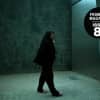The covers of the last two Antony and the Johnsons releases feature black and white portraits Kazuo Ohno, a frail man posed strangely. Ohno, the Japanese founder of the impressionist butoh style of dance, passed away last week at the age of 101. Antony Hegarty considered Ohno his muse, and yesterday the Guardian published Hegarty's obituary of Ohno. After the jump, read what Hegarty had to say to us about Ohno in early 2009, when we interviewed him for our Sleeves column about the album and EP artwork and why he considered Ohno to be his mother.
As a student I went to France and I was walking down the street one day on my way to school and I saw some posterers putting up billboards and [what would become the cover photo of Antony’s Another World EP] was the image they were postering and I didn’t know what it was, but I said, “Can I please have one of those posters?” in my best French and they gave it to me. That picture was above my bed for basically the rest of my life until today. When I was twenty-one I saw a Peter Sempel film called Just Visiting This Planet and in the middle of the film I suddenly saw this old Japanese guy in heavy makeup at the side of a cliff doing this dance with his hands and the rocks were coming off in his hands and he was making this crying gesture and I burst into tears. I went home and looked above my bed and there was this picture of the same guy over my bed that I’d already had for five or six years. And so then I was like, Oh wow, it’s my destiny. I found out his name is Kazuo Ohno, one of the founders of butoh dance. Often they call butoh the dance of darkness, it’s a lot to do with the living and dead’s relationship and the spirit path between life and death and the circle of it.
Butoh generally is characterized by a very slow movement that seeks to go beyond the human form. He might be dreaming of the molecular movement inside a stone or a mountain, and that would be creating the momentum—the creative momentum that would inform the movement. Or he could imagine that he’s a salmon swimming up a stream and he can feel the movement of the water underneath the scales and that would provide momentum to make a greater gesture, or a performative gesture. He’s always getting lost in the unfurling, mystical, natural world. The title The Crying Light, I got that idea from watching [Ohno]. There’s a general feeling or idea on the album of creating a garden or sanctuary in which your spirit can emerge, creating a safe space inside yourself and then by extension your community, and then by extension the world. Then you can go into the natural world, a place where your creative muse or also your sense of your child self can step into the world and experience the full experience of being alive. It’s a lot of stuff that I think about a lot when I’m performing, especially because it’s really stimulating and it opens up the space in a really creative way. It’s also... See, he’s like my mom, basically. This album is really dedicated to him.

